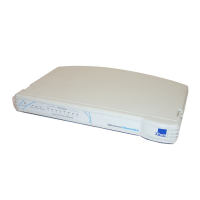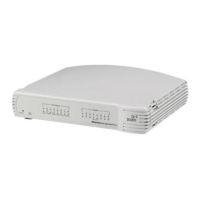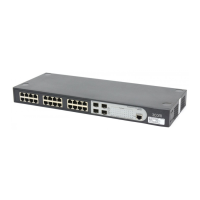3
ABOUT THIS GUIDE
This guide provides information about the Web user interface for the 3Com® OfficeConnect
Managed Gigabit Switch. The Web interface is a network management system that allows you
to configure, monitor, and troubleshoot your switch from a remote web browser. The Web
interface web pages are easy-to-use and easy-to-navigate.
_______________________________________________________________________
User Guide Overview
This section provides an overview to the User Guide. The User Guide provides the following
sections:
• Getting Started — Provides introductory information about the OfficeConnect
Managed Gigabit Switch and how it can be used in your network. It covers summaries
of hardware and software features.
• System Information — Provides information on the configuration of the switch.
• Statistics — provides information on the network traffic to and from the switch.
• System — Provides information for configuring general system information including
the user-defined system name, the user-defined system location, and the system
contact person.
• IP Address — Provides information on managing the IP address of the switch
• Provides information for configuring general system information including the user-
defined system name, the user-defined system location, and the system contact
• Password – Provides information on managing the passwords required to interface
the web and console interfaces.
• Tools – Provides information on restoring the default settings and upgrading the
firmware.
• Port Settings — Provides information for configuring port settings.
• Storm Control – Provides information on how to configure the settings for managing
broadcast and multicast packets.
• Port Mirroring – Provides information on how to copy incoming packets on multiple
ports to a single port.
• Cable Diagnostics — Provides information for managing cable diagnostics
• Trunks — Provides information for configuring Link Aggregation (trunks) which
optimizes port usage by linking a group of ports together to form a single LAG, either
manually or using the automatic LACP protocol.
• Configuring VLANs — Provides information for configuring VLANs. VLANs are logical
subgroups with a Local Area Network (LAN) which combine user stations and network
devices into a single virtual LAN segment, regardless of the physical LAN segment to
which they are attached.
• Managing 802.1X — Provides information for configuring access to the switch using
an external authentication server.

